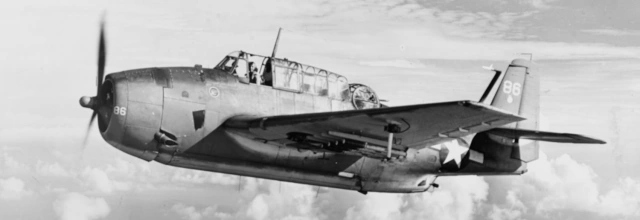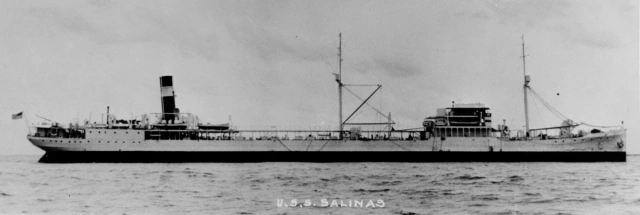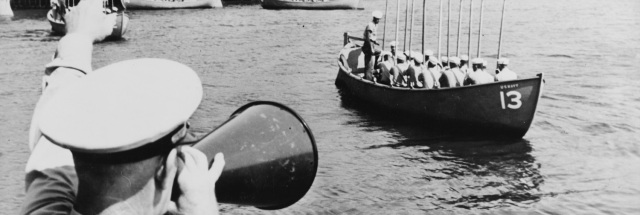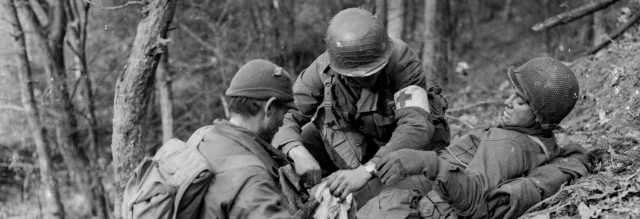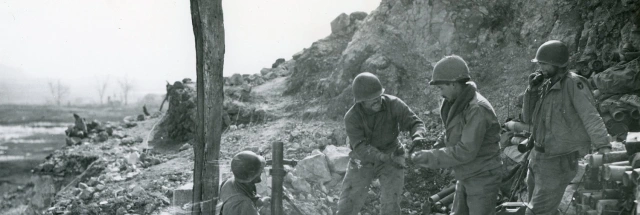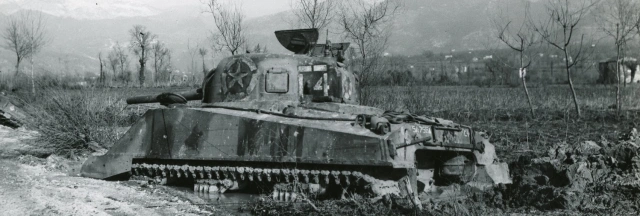| Home State | Civilian Occupation |
| Delaware | Clerk for the DuPont Company |
| Branches | Service Numbers |
| U.S. Naval Reserve, U.S. Marine Corps Reserve | U.S.N.R. 4051843 / U.S.M.C.R. 010611 |
| Theater | Unit |
| Pacific | Marine Utility Squadron 153 (VMJ-153), Marine Air Group 25 (MAG-25) |
Early Life & Family
Reynolds Hill Knotts was born in Clayton, Delaware, on April 24, 1916. He was the son of Horace Hill Knotts (1893–1930) and Mildred Pratt Knotts (1899–1957). At the time, his father was a clerk at the Clayton Bank. Knotts had a younger sister and a younger brother.
By June 5, 1917, when Horace H. Knotts registered for the draft, the family was living at 333 East 24th Street in Wilmington, Delaware. At the time, Knotts’s father was a bookkeeper at Central National Bank in Wilmington, though by the beginning of 1920 he had been hired as an accountant or clerk for the DuPont Company.
Knotts was recorded on the census in January 1920, living with his parents and sister at 215 South Grant Avenue in Wilmington, Delaware. Knotts was attending school in Smyrna as of 1926 and 1928. Knotts was recorded on the next census on April 17, 1930, shortly after his father’s death, living with his paternal grandparents on Mount Vernon Street in Smyrna, Delaware. That fall he began attending Delaware City High School, suggesting that by that point he was living with his maternal grandparents, Harry Pratt (1870–1935) and Sarah Pratt (1869–1942), at their farm outside Delaware City, known as Forest Home.
Knotts was a talented student. Newspaper articles from his youth recorded that Knotts was a Boy Scout and participated in school plays. In 1933, he was one of two students “who represented the student body at the Delaware State Education Association[.]” The following year, he took third prize in a high school declamation contest.
Knotts graduated from Delaware City High School in 1934. The 1939 Blue Hen yearbook recorded his nickname as Brent, listing the following activities: “E-52 Players; Le Cercle Francais; Authority on cinema and cinemaddicts; Co-inventor of the Cue-Master.” He graduated from the University of Delaware in 1939 and worked that summer at the Robin Hood Theater in Arden, Delaware.
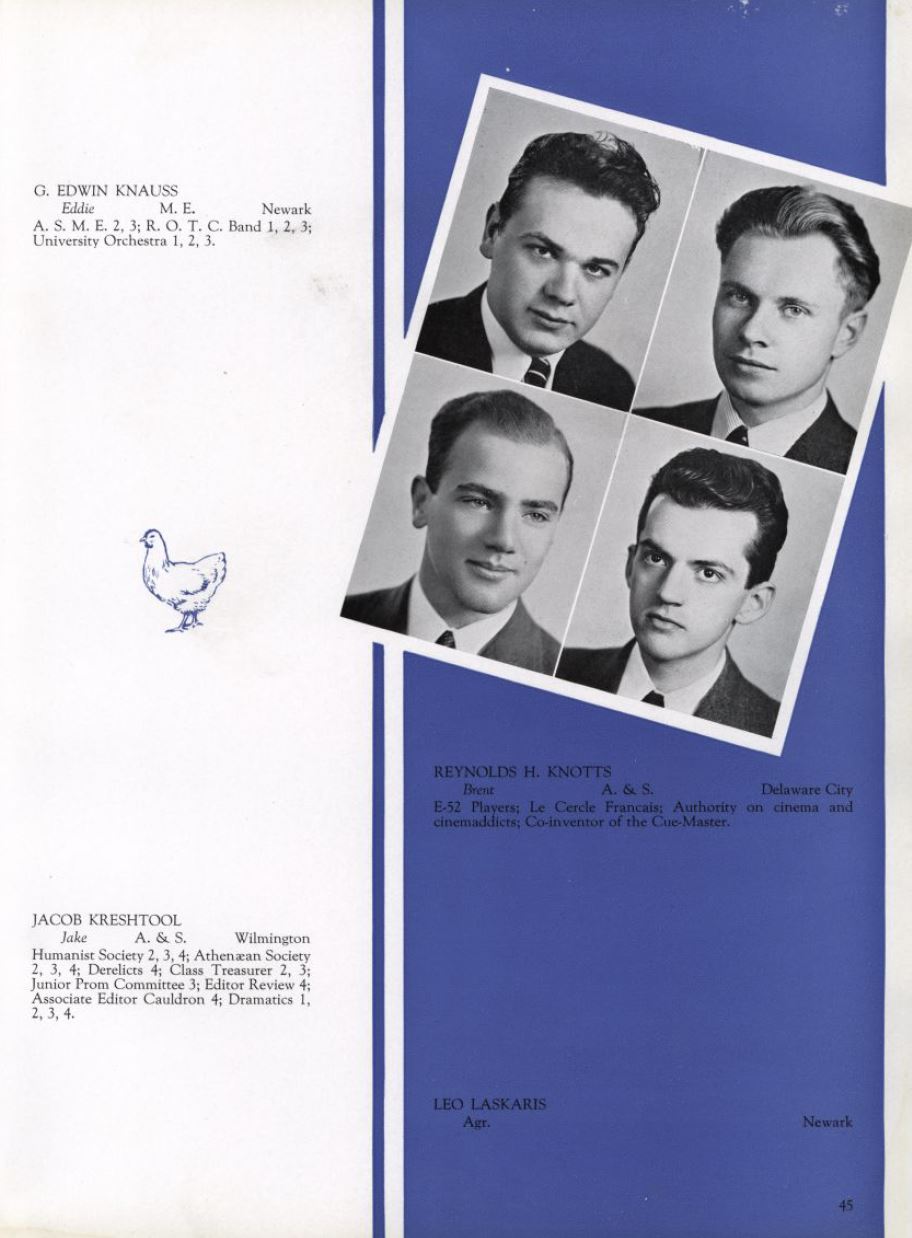
Knotts was recorded on the census on April 22, 1940, living with his maternal grandmother, aunt, and brother on Delaware City Road in Representative District 12 outside Delaware City, Delaware. (The census stated that he had been living in that house as of April 1, 1935.) Knotts’s occupation was recorded as farming. He was living in or near Delaware City when he registered for the draft later that year on October 16, 1940. Knotts worked as a clerk in the Accounting Department, Tabulating Division at the DuPont Company in Wilmington before entering the service.
According to military records, Knotts stood five feet, 4¾ inches tall and weighed 130 lbs., with red or red-blonde hair and blue eyes.
Pilot Training
Knotts volunteered for the V-5 (Naval Aviation Cadet) program shortly before the attack on Pearl Harbor. On August 1, 1941, he enlisted for a four-year term in the U.S. Naval Reserve at the Naval Aviation Cadet Selection Board, Philadelphia, Pennsylvania. On the morning of August 13, 1941, Seaman 2nd Class Knotts reported to the Naval Reserve Aviation Base, Philadelphia, Pennsylvania, for what was known as elimination flight training. According to his Navy personnel file, he passed that training on September 4, 1941, and was “Recommended for appointment as aviation cadet and further flight training.”
Journal-Every Evening reported on October 11, 1941, that Knotts “made his first solo flight at the Philadelphia Navy Yard several weeks ago” and the day before had departed for the Naval Air Station, Jacksonville, Florida. Knotts arrived in Jacksonville on October 13, 1941, and was appointed an aviation cadet effective November 13, 1941.
After completing his flight training, Knotts was commissioned as a 2nd lieutenant in the U.S. Marine Corps Reserve at Jacksonville on May 22, 1942. That same day, he was assigned to the 2nd Marine Aircraft Wing. He was placed on temporary duty at the American Airlines Training School in Fort Worth, Texas, from June 1, 1942, to August 31, 1942.
On September 23, 1942, Lieutenant Knotts joined Marine Utility Squadron 152 (VMJ-152), Marine Air Group 15 (MAG-15). Soon after, on October 7, 1942, he transferred to Marine Utility Squadron 153 (VMJ-153), also part of MAG-15. The squadron was equipped with the R4D, the Navy’s designation for the Douglas C-47 Skytrain. In addition to his duties as a pilot, Knotts was assigned as the squadron photographic officer in November 1942. From December 1942, he was also the assistant communications officer. In February 1943 he was relieved of those extra duties and assigned the duty of squadron communications officer.

Knotts was promoted to 1st lieutenant December 19, 1942, with date of rank December 1, 1942.
Service in the Pacific Theater
On March 20, 1943, 1st Lieutenant Knotts went overseas, flying from Camp Kearney, California, on a multistage journey to the South Pacific. He arrived in New Caledonia on March 29, 1943. After arriving in the theater, VMJ-153 was assigned to South Pacific Combat Air Transport Command (S.C.A.T.) and transferred to Marine Air Group 25 (MAG-25) effective April 1, 1943. The most notable member of S.C.A.T. and MAG-25 was U.S. Navy Lieutenant Richard Milhous Nixon (1913–1994), the future U.S. president, though it was unclear if he ever crossed paths with Knotts.
VMJ-153 was based at Tontouta Air Base, near Nouméa, New Caledonia. It is still the site of an international airport known as Aéroport de Nouméa – La Tontouta. The squadron’s work was not especially glamorous, but it had an important role to play by rapidly moving personnel and cargo among the various far-flung outposts in the South Pacific. Knotts often flew medical evacuation flights. His work supported campaigns in the southern Solomon Islands, on New Georgia, and Bougainville.

During nine months in the South Pacific, Knotts made approximately 254 flights, flying more than 130,000 miles and visiting at least 22 different airfields. His most common destinations were Henderson Field on Guadalcanal in the Solomon Islands, as well as Efate and Espiritu Santo, both in the New Hebrides. Other destinations included Plaine Des Gaiacs, New Caledonia; Quoin Hill, New Hebrides; Munda and Vella Lavella, New Georgia; Nandi (Nadi), Fiji; Sydney, Australia; and Auckland, New Zealand. His most common cargoes were mail, aircraft parts, and passengers’ gear, but he also caried rations, medical supplies, quartermaster supplies, radar equipment, radio supplies, gas tanks, detonators, and dynamite.


Knotts was promoted to captain effective June 15, 1943. On August 9, 1943, he was nominated for the Air Medal for his performance during 123.1 hours of flight between September 1, 1942, and July 15, 1943. However, there is no indication in his personnel file that Knotts was ever awarded that medal.
Captain Knotts’s officer fitness reports were uniformly favorable, with his commanding officers rating him very good to outstanding in all observed areas. On one report, dated September 30, 1943, squadron commander Major Robert B. Bell described Knotts: “An unusually competent officer, well qualified both as a pilot and in the specialized field of radio communications. Potentially a good staff officer.”
On December 27, 1943, Captain Knotts and his copilot, Master Technical Sergeant Louis White McCay (1918–1943), took off from Tontouta, New Caledonia, flying R4D (Bureau No. 12432) on a routine flight to Pekoa Airfield, Espiritu Santo, New Hebrides. His plane was particularly full, with four other crew members and 19 U.S. Navy passengers aboard. 18 of the passengers were pilots and gunners from a single unit, Bombing Squadron 98 (VB-98), who had been on leave in Sydney.
Captain Knotts had flown this route over the Coral Sea more than a dozen times before. The flight usually took just under three hours. According to a document in his Individual Deceased Personnel File (I.D.P.F.):
This flight was tracked by radar to a point near Uvea, [sic] Atoll, Loyalty Islands where it left the screen. Intensive searches conducted immediately and continuing for three days failed to produce any trace of plane or crew other than very few small pieces of wreckage in the vicinity of Uvea Atoll, Loyalty Islands.
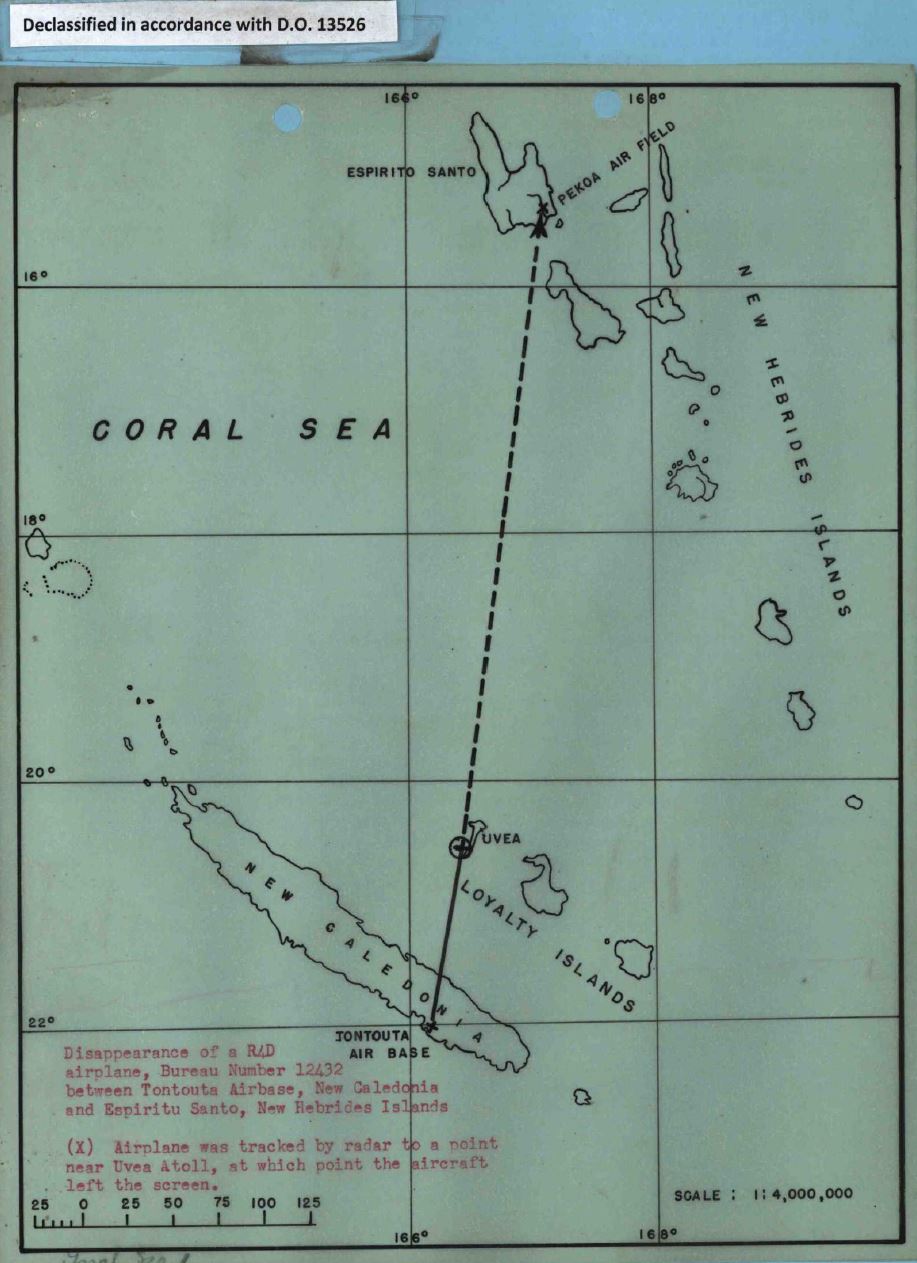
In his page about Captain Knotts on the Missing Marines website, Geoff Roecker wrote:
A three-day search discovered small pieces of wreckage off the southern tip of Ouvéa, and identified parts of the missing R4D-5. Investigators met with a French-speaking islander, who told of seeing the aircraft spin down and crash. A fire in the crew compartment was tentatively blamed for the accident, but no survivors could be found to provide more information.
Captain Knotts is honored on the Courts of the Missing at the National Memorial Cemetery of the Pacific in Honolulu, Hawaii, on the University of Delaware’s World War II memorial in Newark, and at Veterans Memorial Park in New Castle, Delaware.
Notes
Mother’s Year of Birth
Though some records state Mildred Pratt was born in 1900, contemporary birth and census records show that she was actually born in 1899.
Parents
It appears that Knotts’s parents were separated by 1926 and divorced in 1928. However, on his 1941 application for enlistment, Knotts denied that his parents were divorced or separated. Of course, his father was deceased by then.
215 South Grant Avenue
There is no longer a 200-block of South Grant Avenue in Wilmington. Every Evening reported that among other philanthropic endeavors, Wilmington industrialist William Poole Bancroft (1835–1928) built a “parkway extending from Delaware avenue south to the Baltimore and Ohio railroad and thence along Grant avenue to the end of Union Park Gardens.” It appears that after Bancroft’s death, the section of Grant Avenue where Knotts lived was renamed Bancroft Parkway. If so, 215 South Bancroft Parkway, a house dating to 1918, is likely the former 215 South Grant Avenue.
Acknowledgments
Special thanks to Geoffrey Roecker for providing Knotts’s I.D.P.F. and to the Delaware Public Archives for the use of their photo.
Bibliography
“29 Decrees Nisi Granted by Court.” Wilmington Morning News, September 18, 1928. https://www.newspapers.com/clip/118484045/horace-knotts-divorce/
The 1939 Blue Hen. Courtesy of the University of Delaware. https://udspace.udel.edu/bitstream/handle/19716/9756/1939_03_Classes.pdf
“City Pilot Missing as Plane Carrying Wounded Crashes.” Wilmington Morning News, February 3, 1944. https://www.newspapers.com/clip/118487020/reynolds-knotts-missing/
“Declamation Finals Held.” Journal-Every Evening, April 4, 1934. https://www.newspapers.com/clip/118488965/knotts-declamation-contest/
Delaware Death Records. Bureau of Vital Statistics, Hall of Records, Dover, Delaware. https://www.ancestry.com/imageviewer/collections/1674/images/31297_212525-00077, https://www.familysearch.org/ark:/61903/3:1:33S7-9YQM-7334
Fifteenth Census of the United States, 1930. Record Group 29, Records of the Bureau of the Census. National Archives at Washington, D.C. https://www.ancestry.com/imageviewer/collections/6224/images/4531890_00046
Fourteenth Census of the United States, 1920. Record Group 29, Records of the Bureau of the Census. National Archives at Washington, D.C. https://www.ancestry.com/imageviewer/collections/6061/images/4295771-00767
Individual Deceased Personnel File for Reynolds H. Knotts. National Archives, courtesy of Geoffrey Roecker.
“Manufacturer, Benefactor, Dies Nearing Century Mark.” Every Evening, April 20, 1928. https://www.newspapers.com/article/129070203/
“Marine Pilot Lost in Pacific.” Journal-Every Evening, February 3, 1944. https://www.newspapers.com/clip/118488238/captain-knotts-missing/
Muster Rolls of the U.S. Marine Corps, 1803–1958. Record Group 127, Records of the U.S. Marine Corps. National Archives at Washington, D.C. https://www.ancestry.com/imageviewer/collections/1089/images/33068_274514-00517 (October 1942), https://www.ancestry.com/imageviewer/collections/1089/images/33068_272168-00442 (January 1943), https://www.ancestry.com/imageviewer/collections/1089/images/33068_269961-00542 (July 1943)
Muster Rolls of U.S. Navy Ships, Stations, and Other Naval Activities, 1/1/1939–1/1/1949. Record Group 24, Records of the Bureau of Naval Personnel. National Archives at College Park, Maryland. https://www.ancestry.com/imageviewer/collections/1143/images/32863_255982-00119 (August 1941), https://www.ancestry.com/imageviewer/collections/1143/images/32863_255982-00143
(October 1941)
“Navy Advances Delaware City Flying Cadet.” Journal-Every Evening, October 11, 1941. https://www.newspapers.com/clip/118500367/knotts-to-jacksonville/
“News of Clayton.” The Smyrna Times, February 9, 1916. https://www.newspapers.com/clip/118484283/horace-h-knotts-marriage/
Official Military Personnel File for Reynolds H. Knotts. Official Military Personnel Files, 1885–1998. Record Group 24, Records of the Bureau of Naval Personnel. National Archives at St. Louis, Missouri.
Official Military Personnel file for Reynolds H. Knotts. Official Military Personnel Files, 1905–1998. Record Group 127, Records of the U.S. Marine Corps. National Archives at St. Louis, Missouri.
Official Military Personnel File for Richard M. Nixon. Official Military Personnel Files, 1885–1998. Record Group 24, Records of the Bureau of Naval Personnel. National Archives at St. Louis, Missouri. https://catalog.archives.gov/id/57301209
“Rabbit Hunters Have Poor Luck.” Wilmington Morning News, November 16, 1933. https://www.newspapers.com/clip/118488757/knotts-activity/
“Red Lion Farmer Dies in Hospital.” Wilmington Morning News, July 9, 1935. https://www.newspapers.com/clip/118489889/harry-pratt-obituary/
Reynolds Hill Knotts Individual Military Service Record, c. September 29, 1946. Record Group 1325-003-053, Record of Delawareans Who Died in World War II. Delaware Public Archives, Dover, Delaware. https://cdm16397.contentdm.oclc.org/digital/collection/p15323coll6/id/19554/rec/5
Roecker, Geoffrey. “Reynolds Hill Knotts.” Missing Marines website. https://missingmarines.com/reynolds-h-knotts/
Sixteenth Census of the United States, 1940. Record Group 29, Records of the Bureau of the Census. National Archives at Washington, D.C. https://www.ancestry.com/imageviewer/collections/2442/images/m-t0627-00546-00744
“Summer Stock Season at Arden Opens July 4.” Wilmington Morning News, June 2, 1939. https://www.newspapers.com/clip/118489505/knotts-arden/
“War Diary Marine Aircraft Group Twenty-Five, First Marine Aircraft Wing Fleet Marine Force, in the Field. From: April 1, 1943 To: May 1, 1943.” World War II War Diaries, 1941–1945. Record Group 38, Records of the Office of the Chief of Naval Operations. National Archives at College Park, Maryland. https://www.fold3.com/image/270264105/war-diary-4143-to-63043-page-1-wwii-war-diaries
World War I Selective Service System Draft Registration Cards, 1917–1918. National Archives at Washington, D.C. https://www.ancestry.com/imageviewer/collections/6482/images/005207039_01628
WWII Draft Registration Cards for Delaware, October 16, 1940 – March 31, 1947. Record Group 147, Records of the Selective Service System. National Archives at St. Louis, Missouri. https://www.ancestry.com/imageviewer/collections/2238/images/44003_13_00005-01424
Last updated on December 12, 2023
More stories of World War II fallen:
To have new profiles of fallen soldiers delivered to your inbox, please subscribe below.






